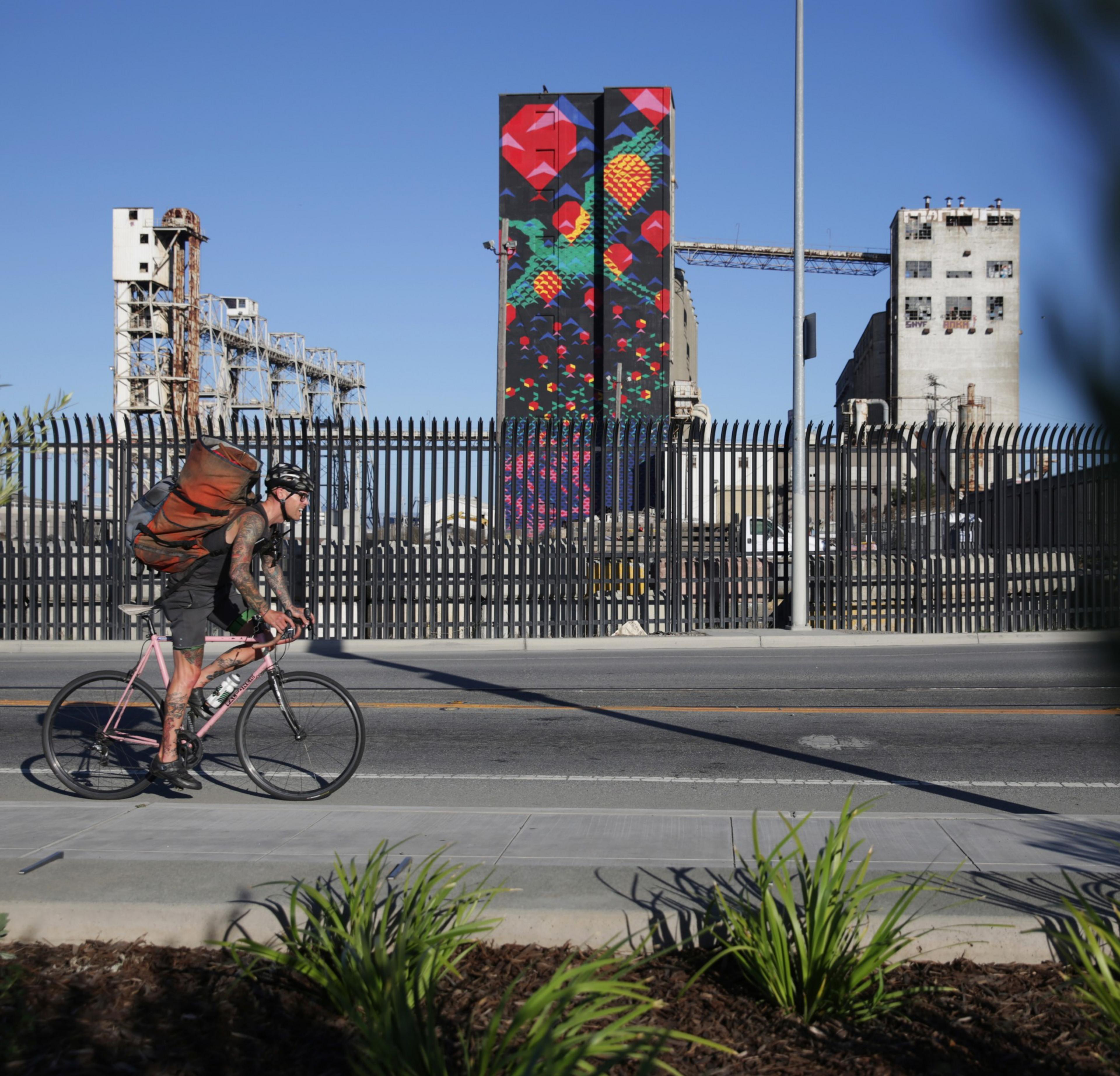Soaring 187 feet above San Francisco’s eastern waterfront near Pier 90, the vividly hued mural “Bayview Rise” (opens in new tab) is set for demolition — possibly as soon as next fall.
It’s not because the enormous, illuminated artwork has haters; the piece, which went up in 2014, was always meant to be temporary. The Port of San Francisco owns the grain elevator and silo on which the mural was painted — along with the rest of the defunct industrial complex — and is working to redevelop the site as part of efforts to clean up the city’s eastern shoreline.
In an Instagram post this week, Bayview advocacy group Economic Development on Third referred to the mural’s impending demise (opens in new tab), which the port confirmed to The Standard.
Spokesperson Eric Young said the port will tear down most of the site’s structures, including “some steel conveyor bridges, the steel towers on the wharf, and the timber wharf” as soon as fall 2025.
The mural may get a reprieve, if a tentative one. Young said the agency does not have the funding to demolish the grain silos but has submitted an application under the California Environmental Quality Act to scrape the rest of the site. If additional funding comes through in time, the silos will be torn down next year, mural and all.

According to a 2022 report, (opens in new tab) the effort is estimated to cost $1.15 million and will be undertaken to eliminate “blight” along the Bay shoreline and nearby Islais Creek. Unused since the 1980s, the decaying grain silos have become a safety hazard and present security and maintenance expenses for the port.
Created by Seattle-based artists Laura Haddad and Tom Drugan, “Bayview Rise” is an arresting artwork depicting hot-air balloons, herons, and various almost pixelated geometric forms in bright reds and greens against a dark background. Illuminated at night to make some colors pop and others recede, the mural is visible at all times of day from vast swaths of the city’s eastern neighborhoods, as well as from Interstate 280 and the top of Liberty Hill near Dolores Park.
Haddad called the mural a “transformative piece” inspired by stories she and Drugan heard from Bayview residents. “The artwork created a gateway announcing the Bayview district, lifting the place and bringing visibility and identity to the industrial waterfront,” she said. “And now the grain terminal and artwork will transition into that ethereal space.”
